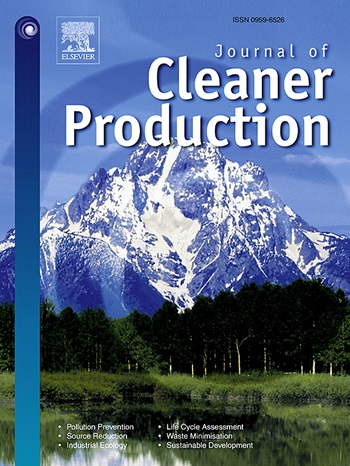A Mixed Integer Linear Programming Framework for Mitigating Enteric Methane Emissions on Dairy Farms Through Optimized Crop and Diet Planning
IF 9.7
1区 环境科学与生态学
Q1 ENGINEERING, ENVIRONMENTAL
引用次数: 0
Abstract
In pursuit of agricultural resilience and sustainability, the European Union (EU) Common Agricultural Policy (CAP) advocates for effective and diverse crop rotations. Yet, dairy farmers face intricate planning challenges due to diet and market complexities. This study introduces a novel mixed integer linear programming (MILP) model that optimizes both crop planning and dairy cow diet formulation within mixed crop-livestock farming systems, considering CAP crop rotation regulations and Greenhouse Gas (GHG) environmental policies. Our approach employs a two-step framework to address enteric methane emissions. First, a multi-objective optimization generates a set of Pareto-efficient solutions, offering policymakers insights into trade-offs between economic returns and methane emissions. Second, the TAX policy (introducing a methane emissions tax) and RED policy (imposing explicit methane reduction targets) can be used to determine the required tax rates or reduction levels to achieve the selected policy goals. These policies also reveal the effects of varying tax rates and reduction levels on crop planning and diet formulation. The proposed approach is illustrated, without loss of generality, on three representative Italian dairy farms – producing milk without Protected Designation of Origin (PDO) rules (STD), or following Grana Padano (GP), or Parmigiano Reggiano (PR) PDO rules. We consider 33 types of crops, allowing double cropping, and 11 animal groups that have distinct nutritional requirements. The multi-objective optimization highlights non-linear trade-offs between economic returns and methane emissions, underscoring the critical role of policymakers in balancing these objectives. RED policy scenarios prove more effective at GHG mitigation than TAX policies. Methane mitigation initiatives prompt dietary adjustments, resulting in higher crude protein percentages and reduced neutral detergent fiber content in cow diets, consequently influencing crop plans. Moreover, under stringent GHG mitigation requirements, dairy farmers lean towards purchasing feed from the market rather than cultivating it on-farm.

通过优化作物和饮食规划减少奶牛场肠道甲烷排放的混合整数线性规划框架
为了追求农业弹性和可持续性,欧盟共同农业政策(CAP)提倡有效和多样化的作物轮作。然而,由于饮食和市场的复杂性,奶农面临着复杂的规划挑战。本研究引入了一种新的混合整数线性规划(MILP)模型,该模型在考虑CAP作物轮作法规和温室气体(GHG)环境政策的情况下,优化了作物规划和奶牛日粮配方。我们的方法采用两步框架来解决肠道甲烷排放问题。首先,多目标优化产生了一套帕累托有效的解决方案,为政策制定者提供了经济回报和甲烷排放之间权衡的见解。其次,税收政策(引入甲烷排放税)和RED政策(制定明确的甲烷减排目标)可用于确定所需的税率或减排水平,以实现选定的政策目标。这些政策还揭示了不同税率和减少水平对作物规划和日粮配方的影响。本文以三个具有代表性的意大利奶牛场为例,在不丧失一般性的情况下,说明了拟议的方法——生产没有原产地指定保护(PDO)规则(STD)的牛奶,或遵循Grana Padano (GP)或Parmigiano Reggiano (PR) PDO规则的牛奶。我们考虑了33种允许复种的作物,以及11种有不同营养需求的动物群体。多目标优化强调了经济回报和甲烷排放之间的非线性权衡,强调了政策制定者在平衡这些目标方面的关键作用。事实证明,在减缓温室气体排放方面,RED政策情景比税收政策更有效。减少甲烷排放的举措促使奶牛调整饮食,从而提高奶牛饮食中的粗蛋白质百分比,减少中性洗涤剂纤维含量,从而影响作物计划。此外,在严格的温室气体减排要求下,奶农倾向于从市场购买饲料,而不是在农场种植饲料。
本文章由计算机程序翻译,如有差异,请以英文原文为准。
求助全文
约1分钟内获得全文
求助全文
来源期刊

Journal of Cleaner Production
环境科学-工程:环境
CiteScore
20.40
自引率
9.00%
发文量
4720
审稿时长
111 days
期刊介绍:
The Journal of Cleaner Production is an international, transdisciplinary journal that addresses and discusses theoretical and practical Cleaner Production, Environmental, and Sustainability issues. It aims to help societies become more sustainable by focusing on the concept of 'Cleaner Production', which aims at preventing waste production and increasing efficiencies in energy, water, resources, and human capital use. The journal serves as a platform for corporations, governments, education institutions, regions, and societies to engage in discussions and research related to Cleaner Production, environmental, and sustainability practices.
 求助内容:
求助内容: 应助结果提醒方式:
应助结果提醒方式:


